I recently did something I’ve never done before. I took a bath in the middle of the afternoon, on a Monday. I left a meeting, bathed, then joined another meeting immediately after. I wasn’t ill, but I definitely felt better afterwards. I also had a dozen colleagues with me at the time.
This was not your typical rub-a-dub. Obvs. This was forest bathing, a concept and term with roots in 1980s Japan. The practice invites participants to notice nature in ways that may be more expansive than their previous outdoor encounters have allowed. All senses are called into awareness, the pace is slowed to foster an immersive experience, and done correctly, the individual opens up to the notion that the world is (eureka!) not all about them.
Across decades and disciplines, forest bathing, more accurately shinrin-yoku (森林浴), has been shown to have positive effects on physical and mental well-being. It’s also at risk of our Western tendency to turn everything beneficial into a catchy, self-help trend. That is a story for another time.
While a mid-day happening shared with co-workers set this event apart for me, it was not my first opportunity to be in nature for such a purpose. And, frankly, trendy or not, I’m not here to feature forest bathing. But, it provides an adjacent activity and a serendipitous segue to my real focus.
Imagine you are walking in the woods. You can be on your own or with others, whatever makes you most comfortable. You feel calm, at ease. There are no predatory or poisonous beasties here, and magically, no mosquitoes. If you wish, you can go barefoot, like I did on Monday. Or your tootsies can be tucked safely into shoes. The weather is whatever makes you happiest: warm or cool, wet or dry, clear or cloudy, breezy or still.
As you move deliberately, and ever so slowly, along your chosen path, the buzz in your brain begins to subside, creating space for new observations. Sounds. Feelings. Smells. Tastes. The soil. The sky. The collection of plants in the landscape around you.
Take stock of what you see. Of what you hear. Did you notice the mosses? Yes, plural.
It is these that I most want you to see today. These are our new best friends.
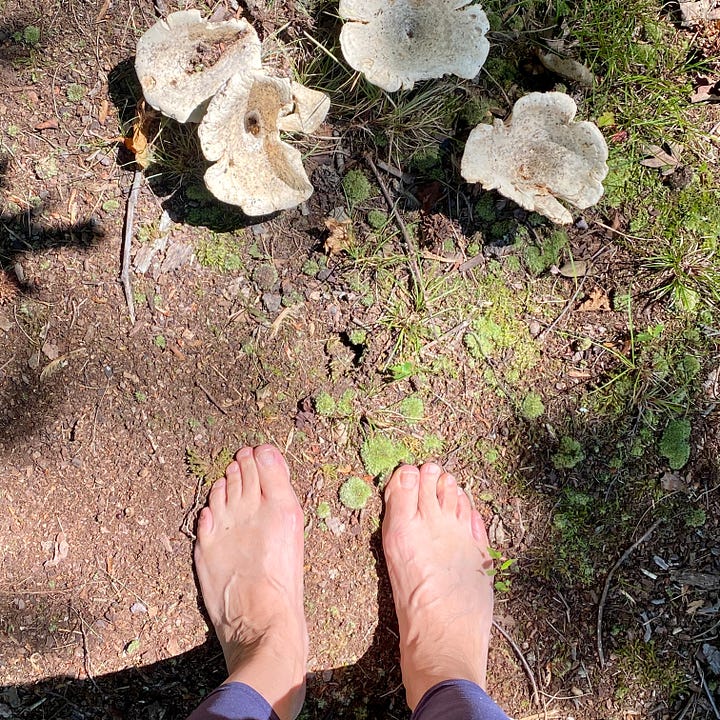
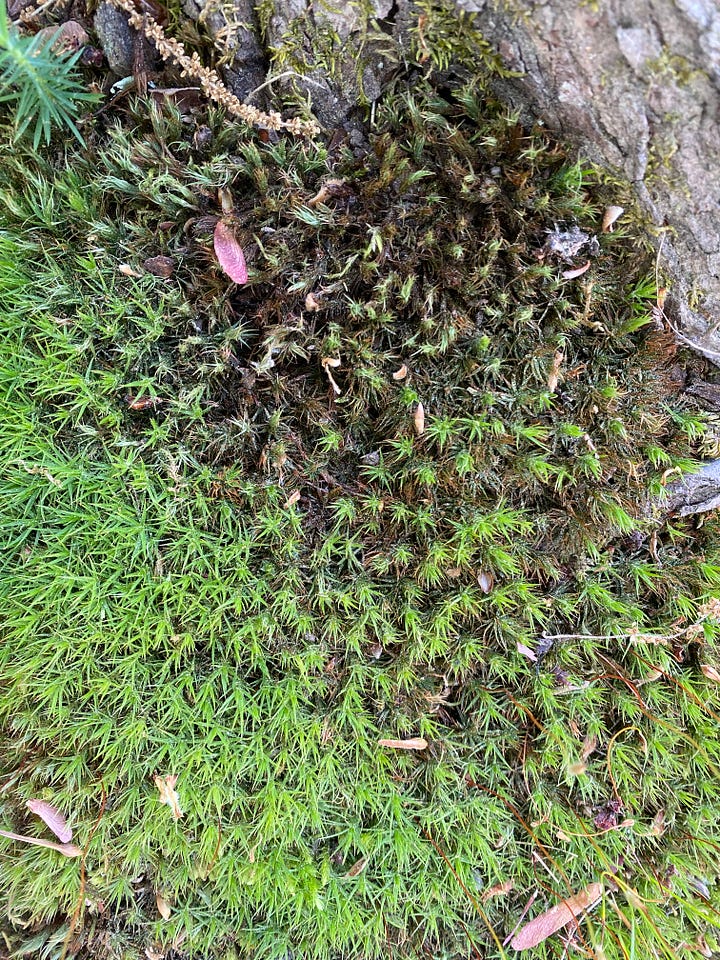
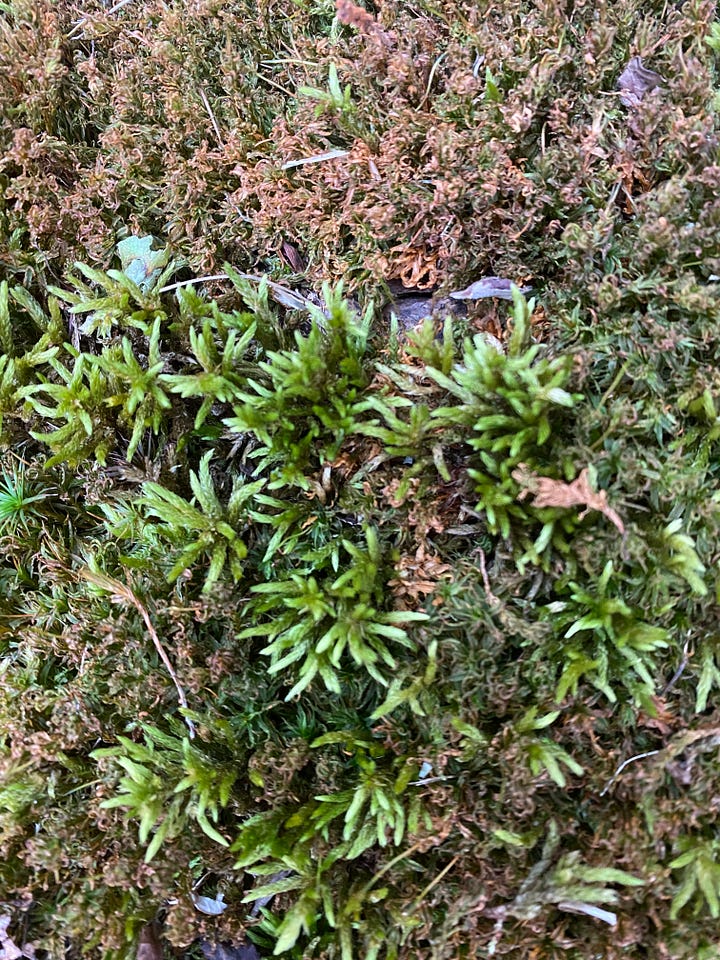
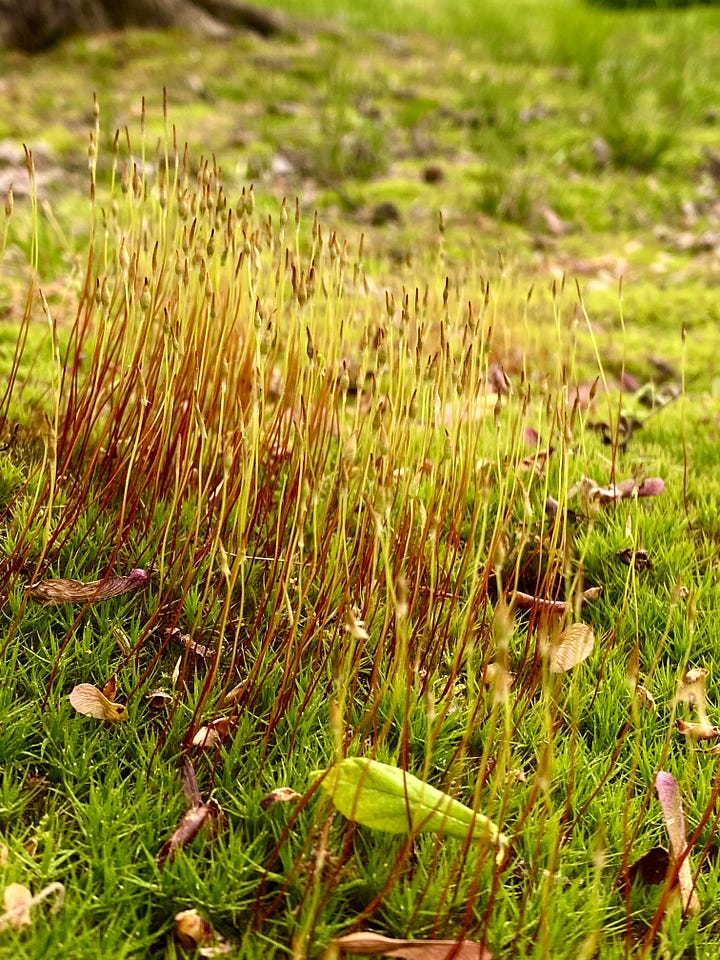
Of all terrestrial plants, mosses are among the oldest. Evolving from algae, they figured out how to establish themselves on earth. Over time, the oxygen they released, and the mat of matter they laid down, helped support other forms of land-based life. Thank you, moss, for making this place habitable.
And yet, we’ve spent centuries not giving them their due. The scientific community has no consensus on how many species of moss there are. Estimates appear to range between 11,000 and 23,000. And, rather than establish common names to help normal people come to know them, as it has for other forms of plant life, mosses are still largely stuck with their pretentious Latin names. Except for Pete. Peat. We’ve all met him. Er, them.
I’ve been noticing mosses for years, but it has only been in the last two that I’ve made considered efforts to better understand them. I have a long way to go, but I have to tell you, I’m totally smitten.
Some of their most fascinating characteristics are straight up geek-level, so whip out your microscope, don your lab coat (or hoodie, as the case may be), and be weird with me. Here’s a list to get you started:
Mosses have no seeds or flowers. Sexual reproduction occurs when spore-bearing capsules swell and explode at speeds up to 60 mph. Pipe down, men. You’re no match for moss. Case in point, mosses can also reproduce asexually, small fragments having the ability to regenerate and form whole new plants. Now that’s a neat party trick.
Mosses have no roots and no vascular systems. They absorb nutrients and water through their surfaces. In times of drought, they desiccate but do not die. Like sponges, they shrink and harden, waiting for moisture. Once it materializes, they can rehydrate in a matter of hours, a trait called poikilohydry. Someday, when you’re trying to clinch the armchair Jeopardy win, you’re going to need that word. Here’s how to pronounce it. You’re welcome.
We picture moss in the shady understory of woodlands or along moist stream edges, but it also lives at the extremes. Some species are believed to survive, in states of dormancy, from -275°C to 100°C (that’s 463°below zero and 212°, or boiling point, for all of us Fahrenheit folks). Mosses exist nearly everywhere on earth, from Antarctica to the Mohave desert. They’re good indicators of air pollution, have the capacity to withstand radioactive environments, and appear to capture and hold toxic materials.
Because they are hard to digest and nutritionally boring, mosses are not a source of food for most animals, but they do provide habitat for insects and microorganisms like tardigrades, also known as water bears or moss piglets. For the ADD-identifying among us, the answer is yes: It is possible to find tardigrade Halloween costumes. I’ll leave the searching to you. Moss. We’re talking about moss.
Due to their antiseptic and absorptive properties, mosses were once used to treat wounds, insulate clothing and housing, diaper babies, and support women’s menstrual needs. More recently, it seems some student thought it might be a good idea to reinvent that last wheel. Please, god, no.
It has been proven that lying prone on a patch of moss, on a warm afternoon, is sleep inducing. Experimenters comment that they wake up feeling refreshed, and damp. Snoozing on a sponge will do that.
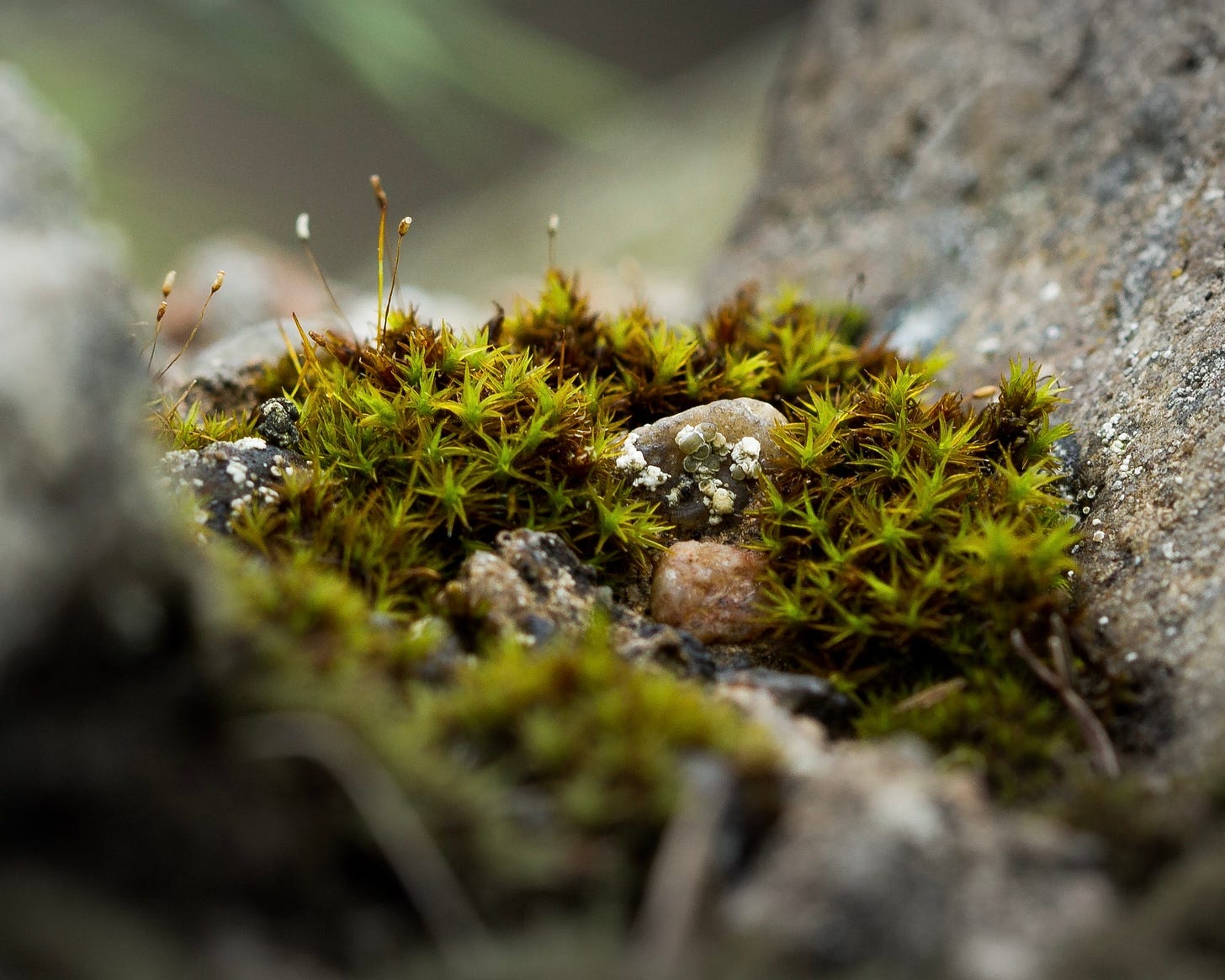
There’s much more to these forests-in-miniature. But, you’re probably ready to come out of the woods now. Before we part company, would you linger a few moments longer? I want to give you a chance to consider moss from a more emotional perspective.
I’ve been intentionally upbeat up to now, because moss deserves that. But, it’s time to move toward the more tender parts ourselves, the parts that crave ancient wisdom, and hope.
We do, right? On some level, aren’t we are all looking for answers, for assurances?
There is an elephant in these woods: While we’ve been rolling along, gathering information about our new, old companions, the words from the world have continued to flow forth.
For me, and I’m sure for many of you, the past 10 days have been heart-wrenching. I haven’t looked at news images. I can’t do it. I hope they don’t find me anyway. I realize that being able to make that choice is a privilege. My city isn’t being blown apart around me. My family and friends are not, that I know of, in near danger of missile strikes or brutal acts of terrorism. I can create a protective bubble for myself.
There is overwhelm and a resultant paralysis. Every response feels insufficient. I want to do more than light candles, make donations, or say prayers. But, what is there to do?
This is what comes to me now: Be like the mosses. We are more than our strife. We have the capacity to change, and we have teachers among us.
Make the most of simplicity.
Grow, even if progress is barely noticeable.
Conserve resources.
Bring beauty to your surroundings.
Transform toxicity.
Support the world with the gifts you have.
Be useful.
Promote healing.
I’m no scientist nor spiritual leader, but I have elements of both within. I believe we all do, and I am convinced that one way of navigating an existence that is too often cruel and complicated is to recognize, as we did long ago, that we are but one species among millions. We are no more important than another, no more intelligent, no more powerful. These are illusions anchored in our own biases.
Look around. Be attentive. Where do you see tolerance? Where do you find peace? Go there.
At the time of the sixth extinction, might we stop wringing our hands long enough to sit quietly at the feet of the ones who have avoided every era of extinction since the dawn of life on land?
Ancient Green: Moss, Climate, and Deep Time -- by Robin Wall Kimmerer
~Elizabeth
Note: Much of what I know comes from, or was inspired by, Robin Wall Kimmerer. An enrolled member of the Citizen Potawatomi Nation and author of the New York Times bestseller, Braiding Sweetgrass, she is also a trained botanist and bryologist, someone who specializes in the study of mosses. If our adventure today has motivated you to learn more, I highly recommend this podcast, this article, or Kimmerer’s first book, Gathering Moss.
If you’d like another lens from which to view these magnificent plants, a 52-minute BBC documentary, The Magical World of Moss, is well worth the time. I can’t make the ads disappear, but I can pretty much guarantee you’ll be glad you watched it anyway. Here’s another source, in case the first one doesn’t work for some reason.




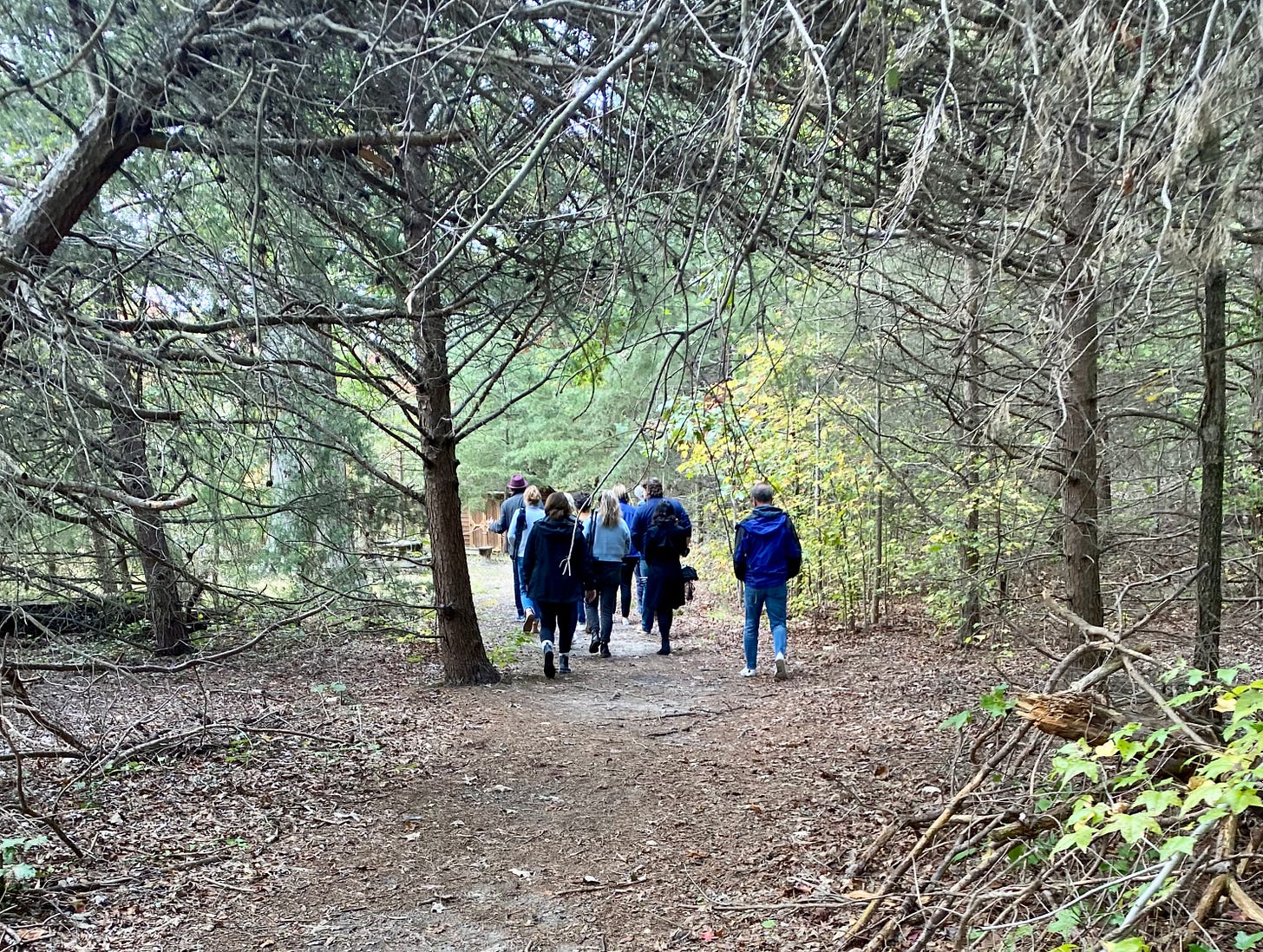
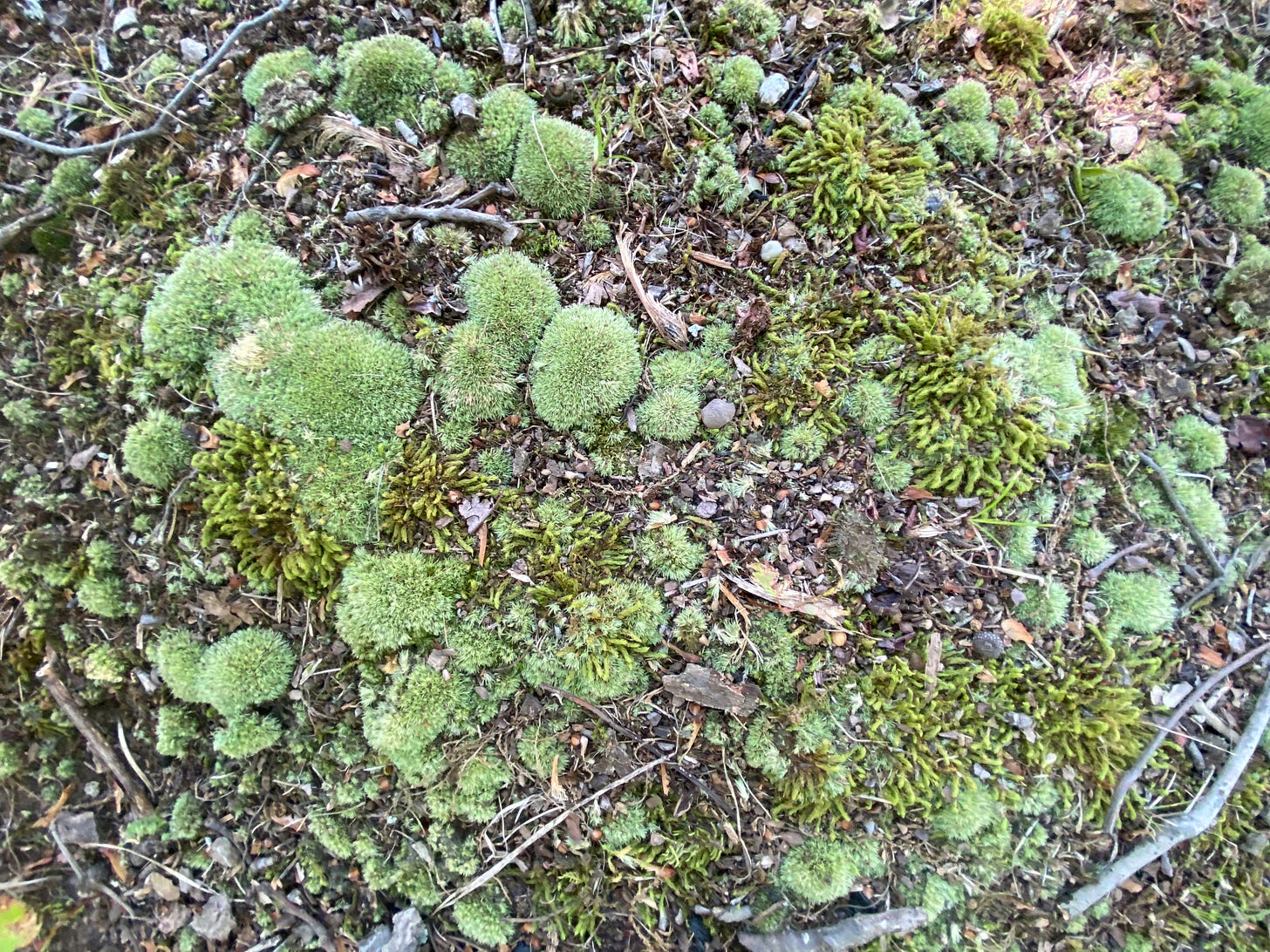
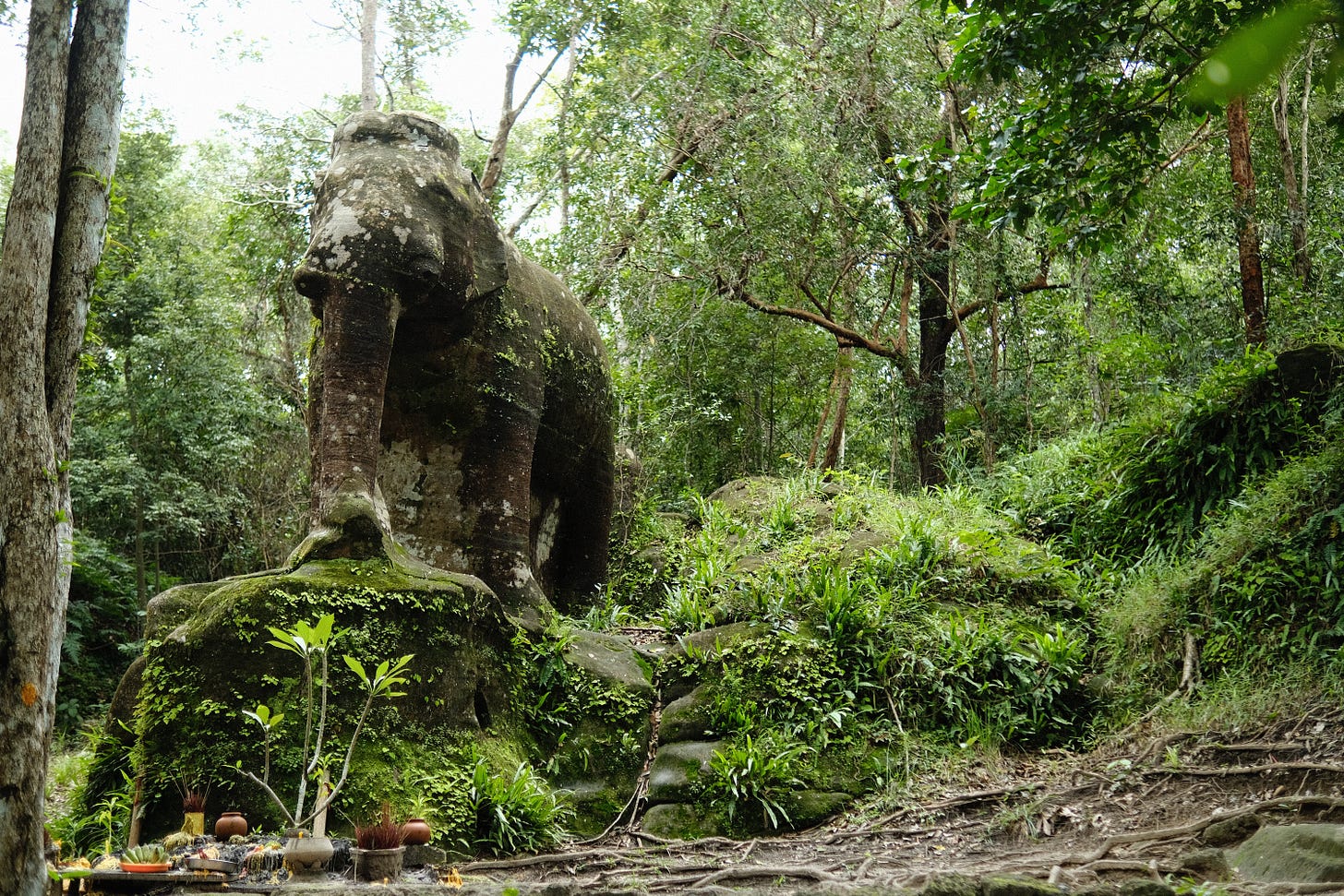
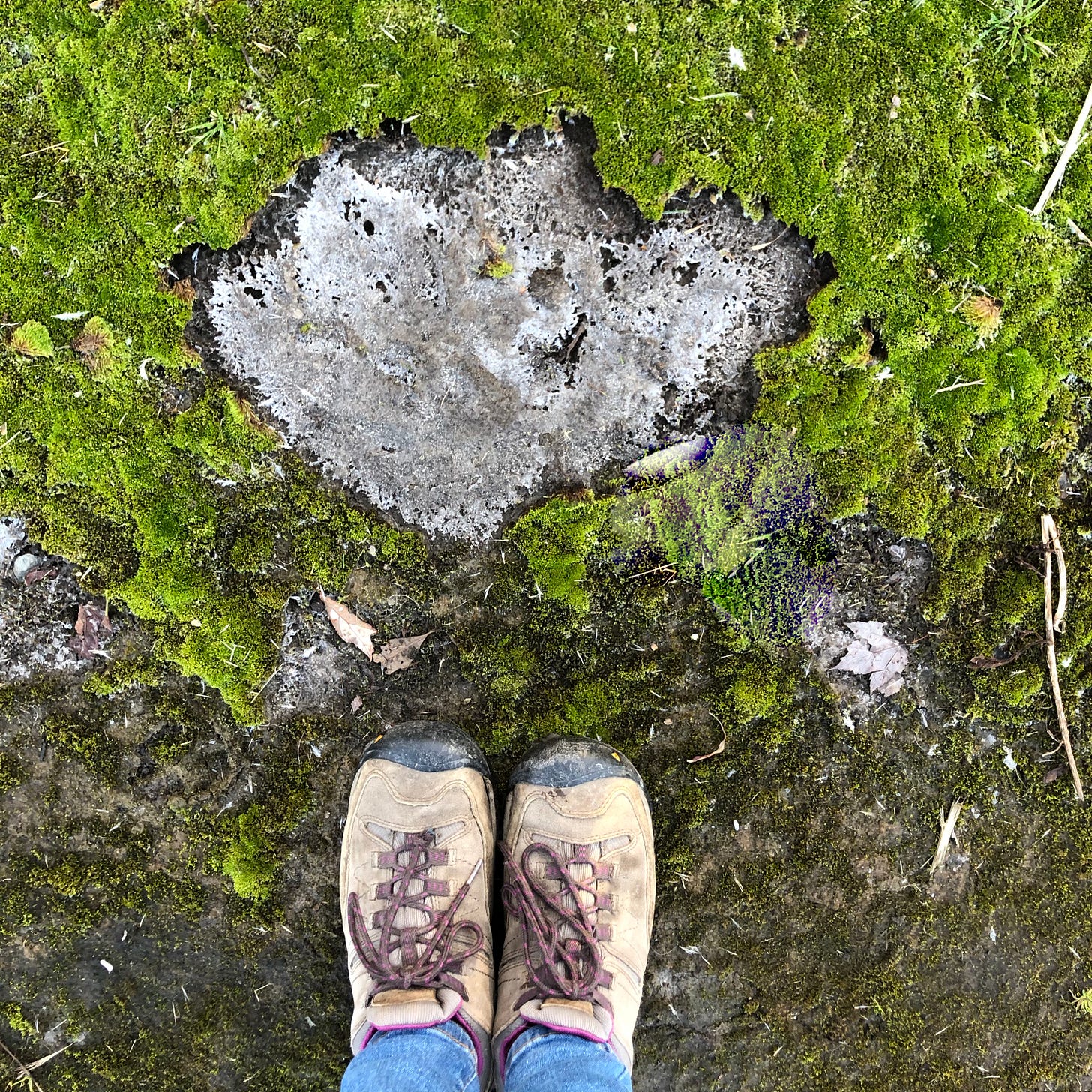
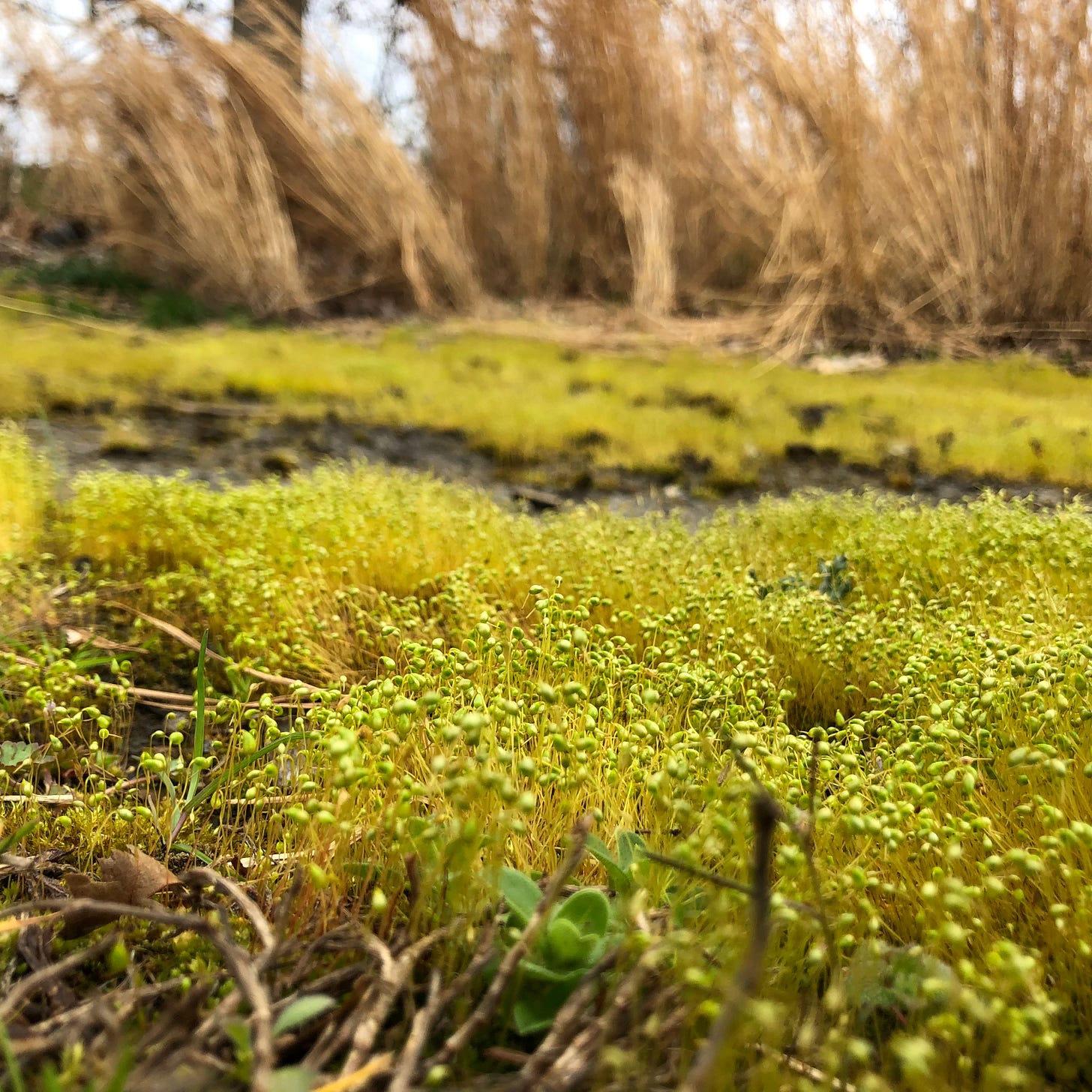
A beautiful and thoughtful post to start the day. I think “poikilohydry” is a word I’ve been missing! Love this: “In times of drought, they desiccate but do not die. Like sponges, they shrink and harden, waiting for moisture. Once it materializes, they can rehydrate in a matter of hours.” Beautiful photos accompanying your post - and beautiful connecting of the moss to the world.
Nothing more beautiful and fun underfoot, our friend moss! Thank you, Elizabeth!